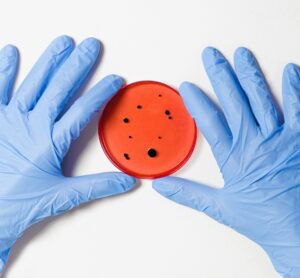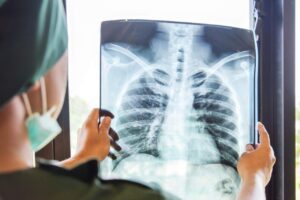Living with bronchiectasis can be challenging, but when it comes to non-tuberculous mycobacterial (NTM) lung infections, the journey can feel particularly daunting. If you’ve been diagnosed with NTM, it’s natural to have questions and concerns. This article aims to provide you with a guide to understanding NTM lung infections, including their causes, symptoms, diagnosis, treatment, and general tips for managing it.
Understanding NTM lung infections
Non-tuberculous mycobacteria are a group of bacteria that are commonly found in the environment, including in soil and water. While they typically don’t cause harm to most people, they can pose a risk to individuals with compromised lung health, such as those with bronchiectasis, chronic obstructive pulmonary disease (COPD), or cystic fibrosis. NTM lung infections occur when these bacteria colonize the lungs, leading to chronic inflammation and respiratory symptoms.
Symptoms of NTM lung infections
The symptoms of NTM lung infections can vary from person to person but may include:
- Chronic cough
- Shortness of breath
- Fatigue
- Unintentional weight loss
- Chest pain
- Fever and night sweats (less common)
NTM infections are slow growing infections which smolder in the background and often make you feel under the weather. They won’t typically make you acutely sick or put you in hospital. Any combination of the symptoms listed above may be present for a long time before NTM is suspected and diagnosed.
How is mycobacterial infection diagnosed?
Diagnosing NTM lung infections can be challenging and often requires a combination of clinical evaluation, imaging studies (such as CT scans), and sputum cultures. Diagnosis may be suspected by appearances on a CT scan but the diagnosis is only made when NTM is cultured either from a sputum sample or deep washings from the lung via bronchoscopy. Mycobacteria are very slow growing so it can take up to 6 weeks for the lab to isolate it in a sample! Even if we find mycobacteria, we may want to get repeat respiratory cultures before we recommend any treatment.
Treatment of NTM lung infections
Not every case of NTM needs treatment. Sometimes optimizing your airway clearance is enough to rid your lungs of mycobacteria. The decision to recommend treatment will depend on a number of factors including your age, presence of other health problems, how much mycobacteria is present (can be estimated from the culture results), severity of infection (as judged by your symptoms and the CT appearances) and obviously your opinions and wishes. Treating NTM lung infections typically involves a combination of 3-4 different antibiotics tailored to the specific strain of bacteria causing the infection. For simpler cases, the medications will be tablets but sometimes you will need intravenous antibiotics for a few weeks. Antibiotics are often taken for an extended period, sometimes up to 18 months or more, to effectively clear the infection. It’s essential to follow your treatment plan closely, even if you start to feel better, as stopping treatment prematurely can lead to recurrence of the infection and antibiotic resistance. Even if mycobacteria is cleared after the long treatment course, there is a chance of recurrence. Through the treatment course you will need periodic blood tests and perhaps more CT scans.
Why and where did I get this?
Many patients ask – where did I get this from and how can I prevent it from coming back? We know mycobacteria are found in various fresh water sources including tap water. They are particularly prevalent in environments with high levels of organic material. In water systems, mycobacteria can form biofilms (hardy coatings) on surfaces like pipes and filtration systems, where they can persist and potentially pose a risk to human health. It is important to periodically soak your shower head in bleach and set your water heater thermostat a notch higher (lower temperatures may promote proliferation in your tank).
Mycobacteria are also commonly found in soil, where they play essential roles in nutrient cycling and decomposition processes. They are particularly abundant in soil rich in organic matter, where they break down complex compounds and contribute to the overall health of the soil ecosystem. If you are an avid gardener, I would not recommend limiting your exposure to soil as we are all exposed in so many other ways!
While less studied compared to soil and water, mycobacteria have also been found in vegetation, including plant surfaces and root systems. Some mycobacteria have symbiotic relationships with plants, helping them to fix nitrogen or acquire nutrients from the soil. Additionally, mycobacteria can colonize the surfaces of plants and contribute to their overall microbiome.
Exposure to mycobacteria in the environment can occur through inhalation, ingestion, or contact with contaminated water or soil. However, it’s important to note that most people are not at risk of developing infections from environmental mycobacteria.
There is emerging evidence linking the use of steroid inhalers and mycobacterial disease. For this reason if you have bronchiectasis it is important to discuss the appropriateness of continuing inhaled steroids – for example symbicort, wixela, advair, breo, dulera, airduo, trelegy.









